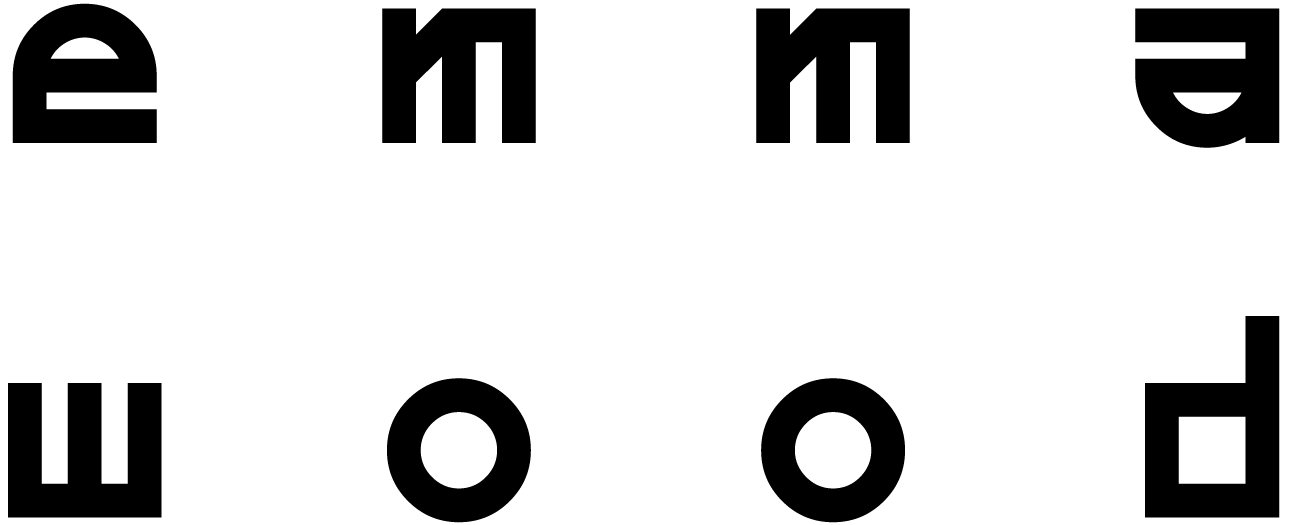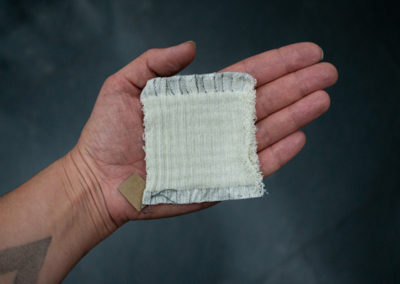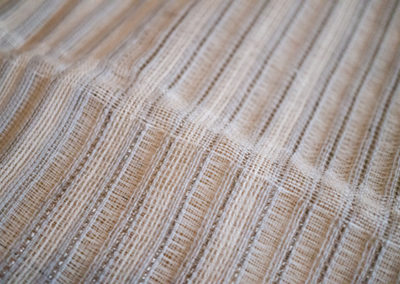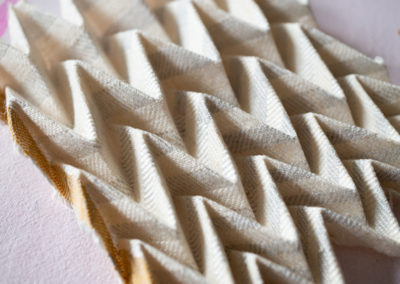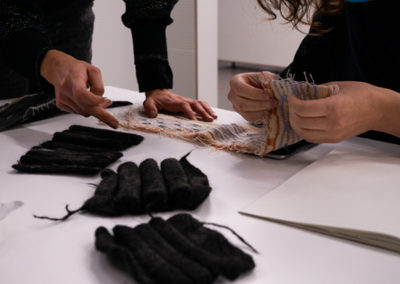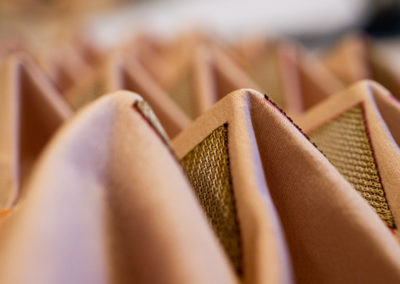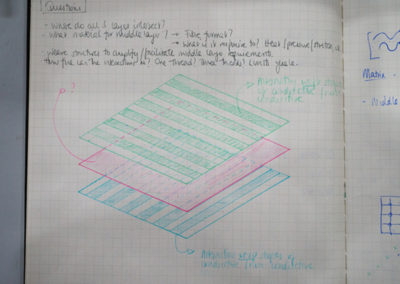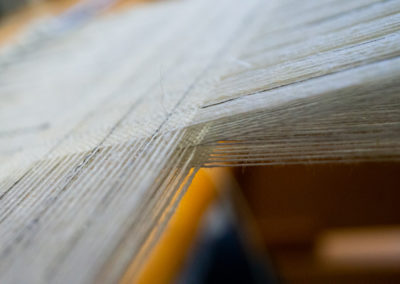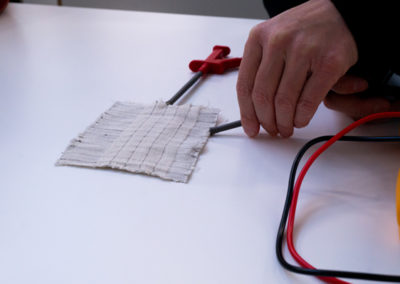when
2020
where
Berlin Open Lab, Berlin, Germany
links
udk folding residency
A one-month residency hosted by the Wearable Computing team at Berlin Open Lab, in partnership with Berit Greinke, Sophie Skach & Arantza Vilas. This project explored using the textile processes of knitting, weaving & pleating to create pleated and folded textile sensors.
During this month I continued my research into adapting high-twist Japanese kimono silk (chirimen) to create lightweight finely pleated/ribbed woven structures capable of incorporating numerous multi-directional sensors. The final result was a small series of ribbed triple-cloth, high-resolution sensor matrices. Measuring less than 10 x 10 cm, each matrix contains up to 96 individual sensors. The micro-pleats are formed by manipulating the chirimen through the weave structure,
A key challenge in designing the sensor matrices involved addressing a loss of conductivity in the top and bottom layers of the matrices during the finishing process, as the removal of the sericin coating from the chirimen (which “activates” the micro-pleats) caused the silver yarn to oxidise. Two alternatives were tested: using resistive yarn in the top and bottom layers instead of the silver yarn, and using a lighter-twist chirimen without a sericin coating that would avoid the oxidisation process in the silver yarn. The use of resistive yarn in the top and bottom layers didn’t provide enough conductivity for the matrices to work effectively, but replacing the sericin-coated chirimen with a glue-coated chirimen was successful. The micro-pleats retained their form & structure, and the silver yarn in the top and bottom layers retained their high level of conductivity.
Initial tests on the sensor matrices were carried out on six sensors at a time in various locations, and the results were as expected. The sensor matrices showed a rapid response to contact, with readings that varied with pressure and returned quickly to a stable resting state. Due to the high-resolution of the sensor there was a high level of neighbourly sensor activity, but it was still possible to identify the “active” sensor.
Going forward, it would be important to test alternative non-conductive fibres in the warp (to determine their impact on the stability of the chirimen micro-pleats), to test increasing numbers of sensors at a time and adapt the weave structure to obtain clearer readings, and to explore effective methods of connecting the high number of sensors in a matrix.
Datenschutzerklärung — Impressum
©Emma Wood 2025
